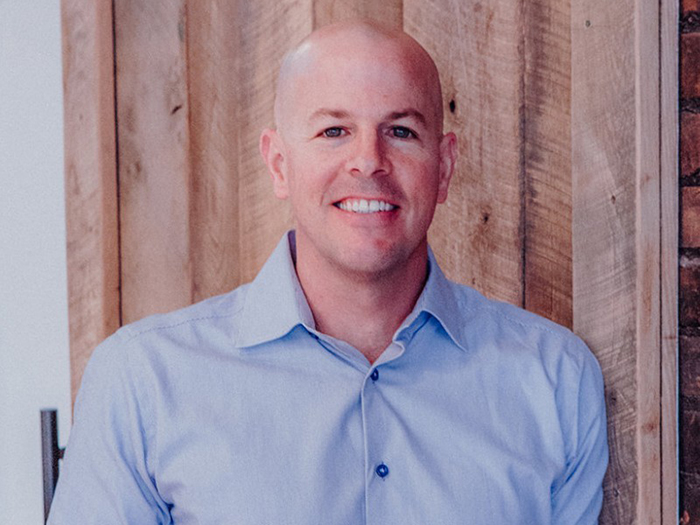How Inflation is Affecting E&S Lines — And Why the Segment Has a Bright Future

This year’s WSIA presented insurers and their distribution partners with a great opportunity to connect and discuss current market trends. Many see opportunities for growth within E&S, which many insureds turn to when they struggle to place it in the traditional property and casualty space.
“Business continues to flow at a high rate into the E&S space, which benefits not only E&S companies but the insurance market as a whole,” said Erich Bublitz, the head of excess and surplus for AmTrust Financial Services.
Inflation — especially in property and liability spaces — is contributing to business moving into E&S. Underwriters are excited to create new solutions to help insureds address today’s challenges.
“The E&S segment, in particular, is at the forefront of this innovation, developing customized solutions for complex and unique risks,” Bublitz said.
“There are numerous exciting developments happening in the insurance industry, particularly in the excess and surplus segment. The industry is evolving rapidly, with significant advancements on the technology, training, and product fronts.”
Property Inflation: Still A Source of Consternation

Erich Bublitz, head of excess and surplus, AmTrust Financial Services
A difficult property market has had insureds eyeing E&S policies for several years now. Capacity has tightened as inflation has driven up the cost of rebuilding and insurers are getting hammered by ever-more frequent storms.
“The property insurance market had hardened significantly over the last couple of years, transitioning from a true soft market to a true hard market in a relatively short period,” Bublitz said.
As a result, many insureds are sharing risk on primary layers. So one insured will “take a portion of the layer, such as 25% or 10%, and share the rest with other carriers,” Bublitz explained. When a claim occurs, it “is typically divided among the carriers based on their proportional share.”
The result is each insurer is taking on less risk, while still providing insurers the needed coverage. This practice is occurring in both primary and excess layers.
“It’s generally wiser not to put all your eggs in one basket. The key is to spread your capital and risk around,” Bublitz said.
“It’s preferable to pay 25% of a $20 million loss rather than bearing the entire $20 million alone.”
Legal Reform Might Soften Social Inflation
On top of economic inflation, carriers are dealing with social inflation in the legal system. Social inflation refers to the increasing costs of jury awards in liability trials.
“Medical costs have risen, and people expect higher damages for undergoing medical procedures. I haven’t seen any indications that social inflation is slowing down at all,” Bublitz said.
Bublitz would like to see legislators address the challenges of social inflation via legal system reform.
“Many people lack an appreciation for the level of investment that goes into the legal system at this point,” he says. “It’s important to shed light on the fact that in many cases, there are big players on both sides of the operation — the big PE firm on one side and the insurance company on the other.
“Letting juries know that the case is being funded by external parties could help mitigate some of the bias against insurance companies, as juries often tend to ‘stick it to the man’ without realizing that ‘the man’ is also on the other side of the transaction,” Bublitz continued.
If tort reform legislation moves forward in one state, insurers are optimistic others will tread on the heels of the leader.
“Once one state takes aggressive action, it may drive other states to follow suit,” Bublitz said. “It’s become a big business, and tort reform faces opposition from powerful players like large private equity firms who benefit from the current system.”
More and More Opportunities for E&S Growth
Inflation of all kinds is having a significant impact on the insurance industry. Consequently, more and more insureds are turning to E&S policies to get the coverages they need.
“The E&S Property market presents a significant opportunity for us to leverage our underwriting expertise and provide coverage for risks that may not fit within the standard market,” Bublitz said.
Reinsurers are in some ways driving this current trend. Reeling from a few years of high claims costs, reinsurers want insurers to manage what risks they’re taking on. “As reinsurance capacity tightens, it trickles down to the primary markets, with reinsurers urging insurers to protect their capital due to limited capacity.
Carriers are looking to launch new E&S products to take advantage of the chance for growth. “With the current strength of the market and the abundant opportunities in the E&S space, now is an ideal time to launch anything that aligns with our business plan,” Bublitz said. “The E&S Property market presents a significant opportunity for us to leverage our underwriting expertise and provide coverage for risks that may not fit within the standard market.”
The only thing that could hamper this growth? The talent crisis. “The influx of business is outpacing the industry’s ability to find and develop talent,” Bublitz said. “As an industry, we must work to raise awareness about the exciting and rewarding career opportunities available in insurance. This includes highlighting the potential for professional growth, the dynamic nature of the work, and the ability to make a positive impact on individuals and businesses.”
Still, Bublitz feels confident about E&S’s future. He says a major takeaway from WSIA was that E&S has a bright future.
“The conference conveyed a positive message across the industry, with challenges being viewed as normal and growth-driven rather than stemming from uncontrollable external factors. The focus was on making improvements and solving challenges, indicating a healthy industry outlook,” Bublitz said. “As a company, we are always looking for opportunities to grow and diversify our business.” &










